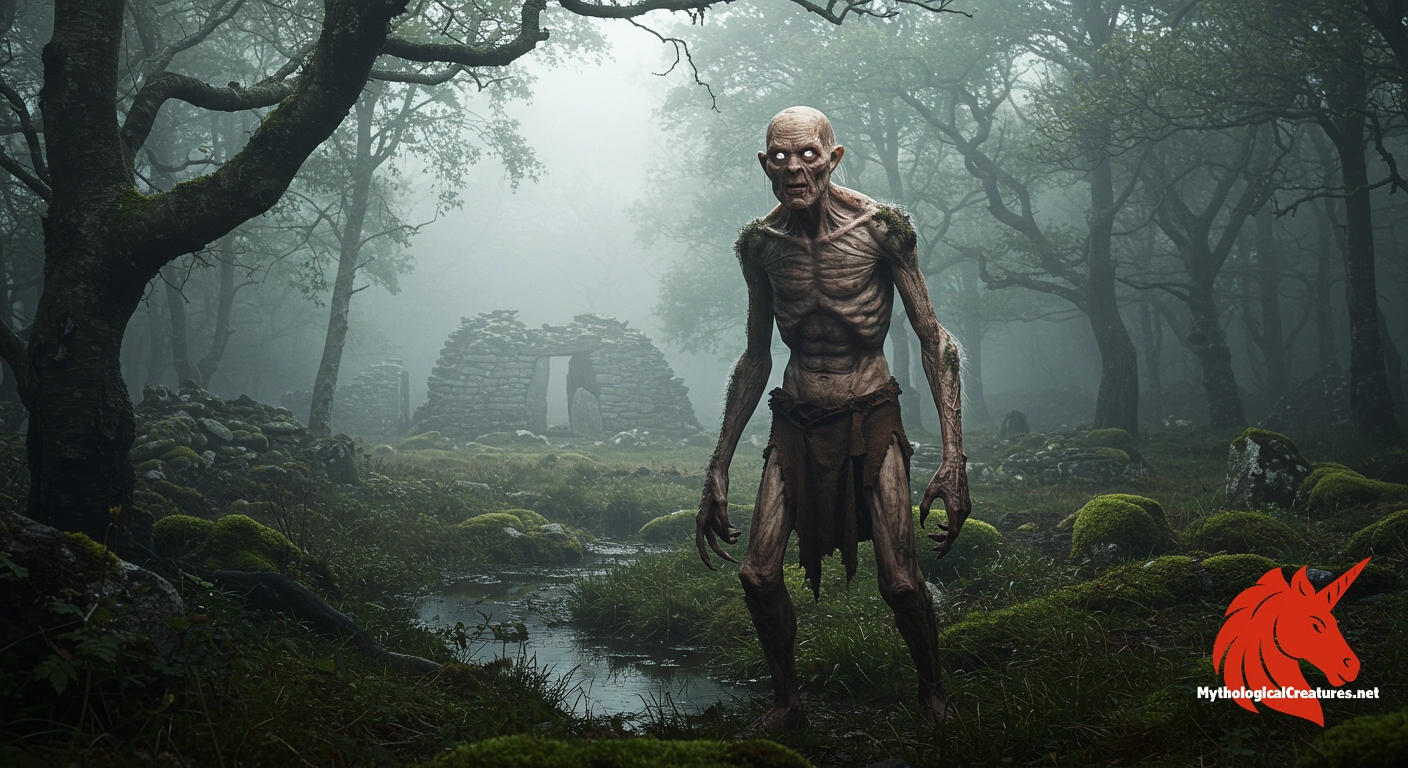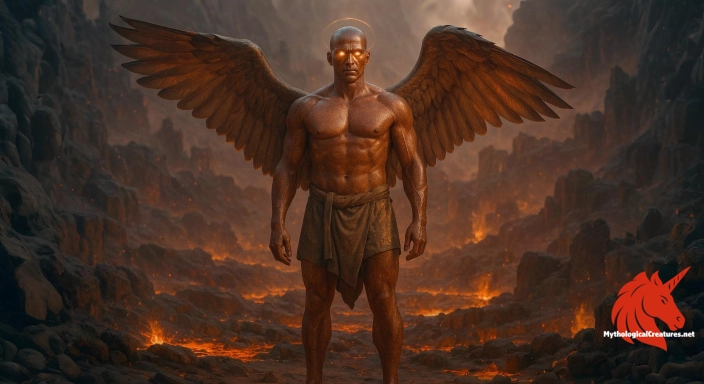Bodach: The Bodach is a folkloric figure from Gaelic mythology, often depicted as an old man embodying the dual roles of trickster and bogeyman.

Bodach
Bodach - Serves as a cautionary figure embodying both the mischief and the feared aspects of old age in Gaelic tradition.
Origins & First Encounters
The bodach is a quintessential figure in Gaelic folklore, its presence echoing through the mists of Scotland and Ireland as an enigmatic trickster and ambiguous bogeyman. Born from an intermingling of ancient myth and oral tradition, his origins are steeped in a time when the natural and supernatural were inseparable. His early attestations can be traced back to era when tales spun in rugged highland communities served as both moral instruction and entertainment. In these narratives, he emerges as a mysterious old man whose deeds oscillate between mischief and esoteric wisdom. His character embodies a duality of humour and warning, challenging those who encounter him to reassess their own actions. The bodach’s legendary exploits are often recounted in dimly lit gatherings, where the boundary between the real and the fantastical blurs. His role in pairing with the cailleach further enriches his complexity, reflecting the intricate interplay of masculine and feminine archetypes within Gaelic myth. Over time, his figure has come to represent the ambiguities of age, authority, and the capricious forces that shape human destiny. The bodach, in its many forms, continues to captivate the imagination as a living remnant of an ancient cultural heritage.
Source Texts & Tale Variants
The primary sources of the bodach legend are found in the treasured yet fragmented oral traditions of the Gaelic peoples as well as in early manuscripts that preserve these ephemeral narratives. Although sparse, medieval texts and ballads capture fleeting images of this elusive figure, portraying him as both a lighthearted prankster and a bearer of caution. Various manuscripts hint at his origin through allegorical fragments that have been passed down over generations. His exploits are chronicled in collections of folklore where each retelling adds layers of regional colour and subtle reinterpretation. The recurring appearance alongside the cailleach in several sources hints at an intentional duality within the mythic structure of Gaelic lore. As much as recorded texts provide a framework for his mythology, local oral histories have enriched his character with vibrant narrative details and imaginative embellishments. Over time, travelling storytellers and folklorists have collected numerous variants that capture the bodach’s mischievous spirit through differing regional lenses. These story variants reveal a figure both adaptable and persistently enigmatic, straddling the line between benevolent trickster and ominous harbinger. In this way, the accumulated sources ensure that the bodach remains a dynamic element in the tapestry of Gaelic myth.
Form & Powers
Traditional portrayals of the bodach emphasise his status as an archetypal old man, marked by a weathered countenance and a hint of otherworldly vitality. He is often depicted with a long, unkempt beard and a face carved with deep, time-worn lines that speak of countless adventures. His eyes are said to glitter with a cunning light, revealing both mischief and a profound, almost spectral intelligence. Despite his advanced years, accounts commonly describe him as having a slight and agile frame, a paradox that enhances his trickster persona. His attire, typically rendered as ragged and rustic, seems intimately tied to the wild landscapes he frequents, as though fashioned from the very elements of the highlands. Some descriptions even suggest that his form can seem to shift in the twilight, blurring neatly into the shadows of his natural surroundings. The interplay of weathered features and sudden, unexpected vitality creates an image that is as enigmatic as it is memorable. Variations in his portrayal—ranging from slightly hunched to subtly imposing—further underscore the mutable nature of his myth. Every detail in his physical depiction serves as a narrative device, linking the ephemeral qualities of age with the unyielding persistence of folklore.
Regional Faces
Across the Gaelic regions, the bodach takes on many subtle forms that mirror the diversity of local cultural beliefs and environmental influences. In parts of Scotland, villagers often regard him with a mixture of bemusement and caution, a spectral figure whose appearance is both a source of humour and a harbinger of unforeseen events. Irish narratives, on the other hand, tend to intertwine his mischief with a palpable connection to the untamed natural world, allowing him to emerge as an almost elemental presence. Regional storytelling colours his character with attributes that range from light-hearted prankster to the embodiment of a more ominous, otherworldly warning. In remote communities, his arrival amid the mists and shadows is woven into the fabric of local lore, where natural landmarks shape and reflect the character’s evolving identity. Some traditions even cast him as a guardian of ancient, sacred spaces, linking his capriciousness to deeper seasonal or environmental cycles. The diversity of his portrayals across regions highlights a common theme: his role as both a mirror and a moulder of local cultural values. Whether as a playful spirit in one area or a portentous figure in another, his regional variants contribute to an ever-richening mythos. These nuanced differences ensure that the bodach remains a compelling and adaptive symbol across the Gaelic world.
Cultural Parallels
When set beside the trickster figures of other mythic traditions, the bodach shines with a distinctive blend of irreverence and solemnity. Echoing elements similar to the Norse deity Loki, his character navigates the delicate balance between chaos and subtle wisdom, challenging conventional norms across cultures. In English folklore, figures such as Puck resonate with the bodach’s unpredictable nature, yet his portrayal as an aged, almost spectral presence adds unique depth. This intrinsic ambiguity positions him as both a mischief-maker and a sage, roles that transcend mere comic relief to probe deeper moral quandaries. His well-documented companionship with the cailleach further differentiates him from other solitary tricksters, suggesting an inherent duality that is rare in the wider world of myth. Comparative studies reveal that while various cultures celebrate the trickster archetype, the bodach’s intertwining of age, experience, and elusiveness offers a particularly rich vein of symbolic meaning. Like similar figures from Native American lore or Mediterranean myth, he functions as a catalyst for awakening and self-reflection. The cross-cultural dialogue that emerges in these comparisons underscores the universal appeal of trickster motifs, even as each tradition adds its distinctive flavour. In this light, the bodach not only enriches the tapestry of Gaelic myth but also echoes broader themes found in the global folklore of cunning and transformation.
Legacy & Modern Evolution
Over the centuries, the bodach has evolved from a figure recounted solely in whispered folklore to an emblem of enduring cultural resilience and creative reinterpretation. Initially celebrated as a cautionary, trickster presence in oral traditions, his mystique has since transcended time and geography. Modern portrayals in literature, theatre, and digital media have breathed new life into his character, casting him in roles that explore both his humorous mischief and the somber lessons he imparts. Contemporary adaptations often harness his enigmatic aura to comment on the impermanence of tradition amid modernity, creating a bridge between the ancient and the current. Creative reinterpretations highlight his role as a reflective mirror on human folly, where the playful and the profound coexist. In artistic circles, his image has inspired an array of inventive expressions—from visual art installations to innovative storytelling projects. His transformation over time mirrors a broader revival of interest in Gaelic heritage and the intrinsic power of myth to navigate modern dilemmas. Community festivals and cultural revivals now celebrate his legend as a touchstone of identity and continuity. The bodach’s enduring legacy, continually reshaped by successive generations, stands as a testament to the timeless power of myth in illuminating the human condition.
Interesting Fact
Despite his seemingly mundane appearance as an old man, the Bodach's role as a bogeyman highlights how familiar human forms are used in folklore to personify supernatural and cautionary forces.
Quick Creature Info
Features:
Our Mythic Legendary Rating:

Also Sometimes Known As:
Habitat:
Supernatural Powers:
Physical Attributes:
Abilities:
Behavior:
Lore:
Related Creatures, Tales or Lore
References
Discover Another Mythical Legend You May Not Have Heard Of?
Uncover the mysteries of ancient folklore and expand your knowledge of legendary beings from cultures around the world.
Dare to Meet the Maalik....
Curated by the Mythological Creatures Team (rev. May 2025)
